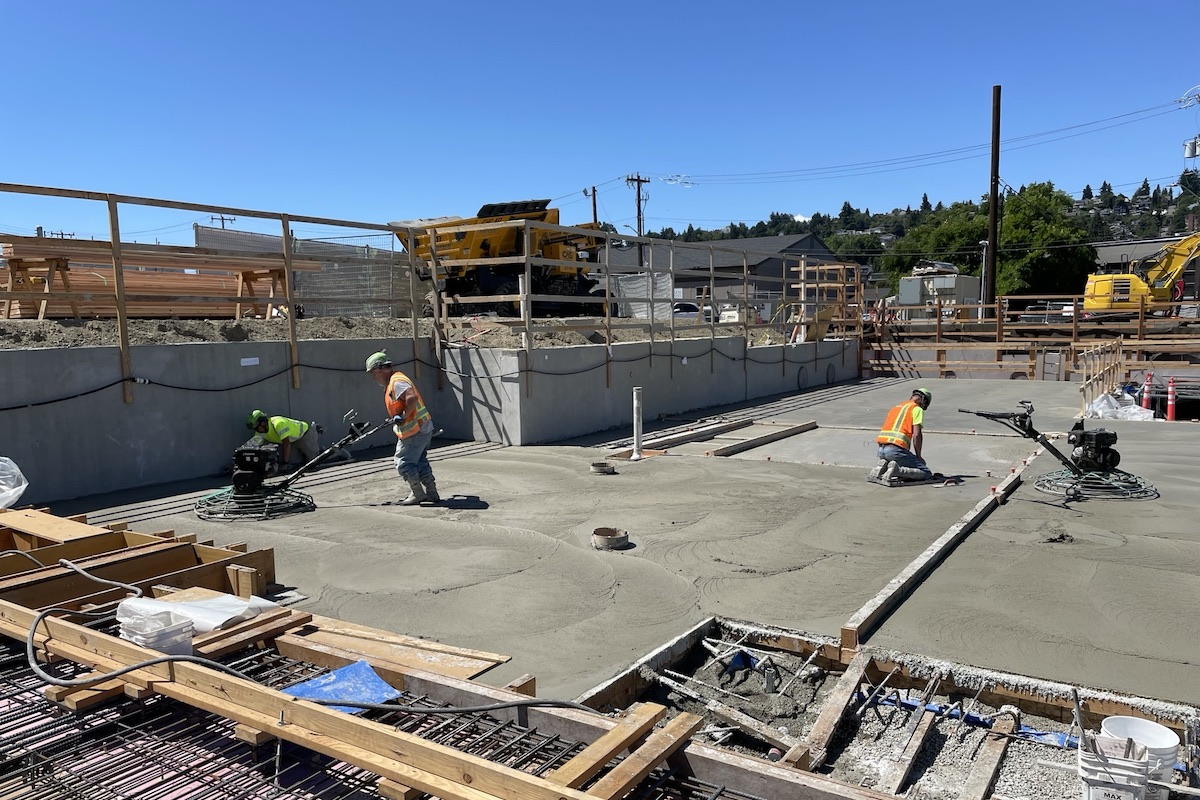Presenters included:
- Brightworks Sustainability (Elena Lake, Sustainable Buildings Technical Lead) shared the “why” behind the urgency of addressing embodied carbon in buildings, and lessons learned from the consultant perspective in coordinating the process from early owner decision of using low carbon concrete on a project through carbon data collection post-construction.
- Oregon State University (Jason Weiss, Professor, School of Civil and Construction Engineering) shared latest research on strategies to reduce the Global Warming Potential (GWP) of concrete and software that can be used to predict the performance of concrete when adjusting the material makeup of the mix designs with different supplemental cementitious materials (SCMs).
- ZGF Architects (Chris Flint Chatto, Principle Architect) shared a case study of achieving 40% lower carbon concrete on the Seattle Storm’s training complex, quantified via ZGF’s publicly-available Concrete Life Cycle Assessment Tool which project teams can use to compare potential concrete mix designs and calculate carbon savings.
- KPFF (Kevin Nadolny, Structural Engineer) shared tips for life cycle assessments between building framing systems and recommendations for writing performance-based specifications to reduce concrete GWP versus prescriptive-based strength requirements.
- Fortis Construction (Charlie Thompson, Project Manager) shared lessons learned from a recent Lane Community College project where all interior and exterior concrete work used a low carbon mix design (20-30% cement content reduction with slag). Lessons learned included creating a budget allowance for potential cost impacts, evaluating risk from installer/design team, and managing slower cure times on site during concrete pours.
Hearing perspectives from different viewpoints in the AEC industry fostered a discussion around opportunities and challenges in working toward adopting more low carbon concrete solutions in the industry. The session was attended by local concrete suppliers (CalPortland, Knife River, Whitaker Ellis, Wilsonville Concrete Products) who shared their challenges and risks associated with switching to lower carbon mix designs (longer cure times, schedule impacts, strength test consistency). Representatives from the City of Portland also shared the collaborative approach they are taking, working with local concrete suppliers on implementing the city’s Low-Carbon Concrete Initiative on their publicly-owned projects and how they foresee that moving to private projects as well.
One of the biggest takeaways from the session was the importance of prioritizing and discussing low carbon concrete goals as early in the project as possible and engaging with concrete suppliers during design in order to allow for required strength tests of new, low carbon mix designs. Success is dependent on stakeholder collaboration between owners, architects, structural engineers, general contractors, concrete subcontractors, and suppliers beginning in design and through construction, so regular coordination is key to the success in lowering the carbon footprint of concrete on projects.






































































